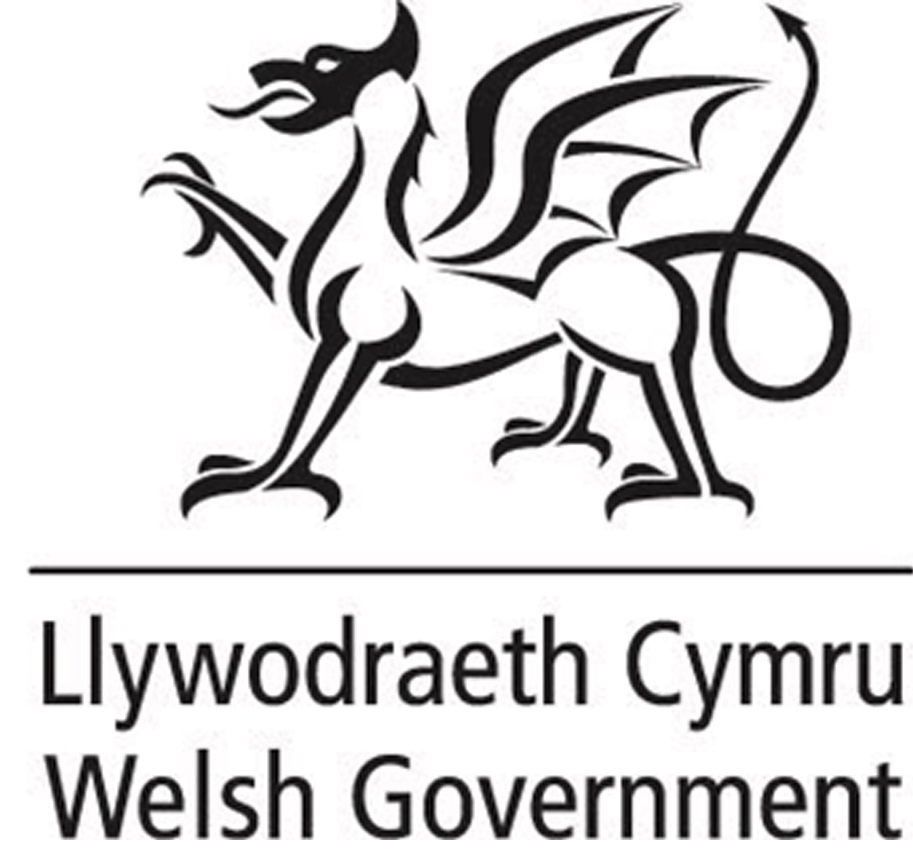Welcome to our town, we hope you enjoy your visit and have the opportunity to do some exploring. Some town history has been included in interpretation boards and leaflets in the town.
Along the Town Walk, you will find out more about the town’s history, our old industries, the failed mining attempts, the healing well and the great fire of 1758 to name a few.
The name is derived from the dedication of its church to St. Mary and its distinguished adjunct from an ancient encampment said to have been constructed in the latter part of the fourth century by Einion Yrth, tenth son of Cunedda Wledig, King of Cumbria. Llanfair Caereinion translates as “St. Mary’s Church by the Fort of Einion”.
It first appears as Llanveyr in 1254 and Llanveyr in Kereynon in 1281/2. It does not have Borough status but emerged as a town after local farmers set up a market to sell their stock.
Drovers camped in Wynnstay fields to shoe their cattle before heading south.
The town was home to renowned clock maker Samuel Roberts, he was a tenant farmer who supplemented his income by making grandfather clocks between 1755-1774, using Welsh oak for many. He made over 400 numbered clocks.
One of the 20th century’s most popular Welsh-language writers Islwyn Ffowc Elis lived in this town. Ordained as a Presbyterian minister in 1950, in his first pastorate in Llanfair Caereinion he helped the Anglo-Welsh poet R S Thomas to master Welsh. In 1951 he won the prose medal at the National Eisteddfod of Wales. Cysgod y Cryman and Yn Ôl i Leifior describe the social tensions between two generations on a fictitious large family farm, called Lleifior, in Montgomeryshire, Mid Wales.
When Cysgod y Cryman was published in 1953, it was his first novel and it breathed new life into the Welsh language novel, inspiring a new generation of authors to tackle the genre. It also established him as the foremost Welsh-language novelist of his era.
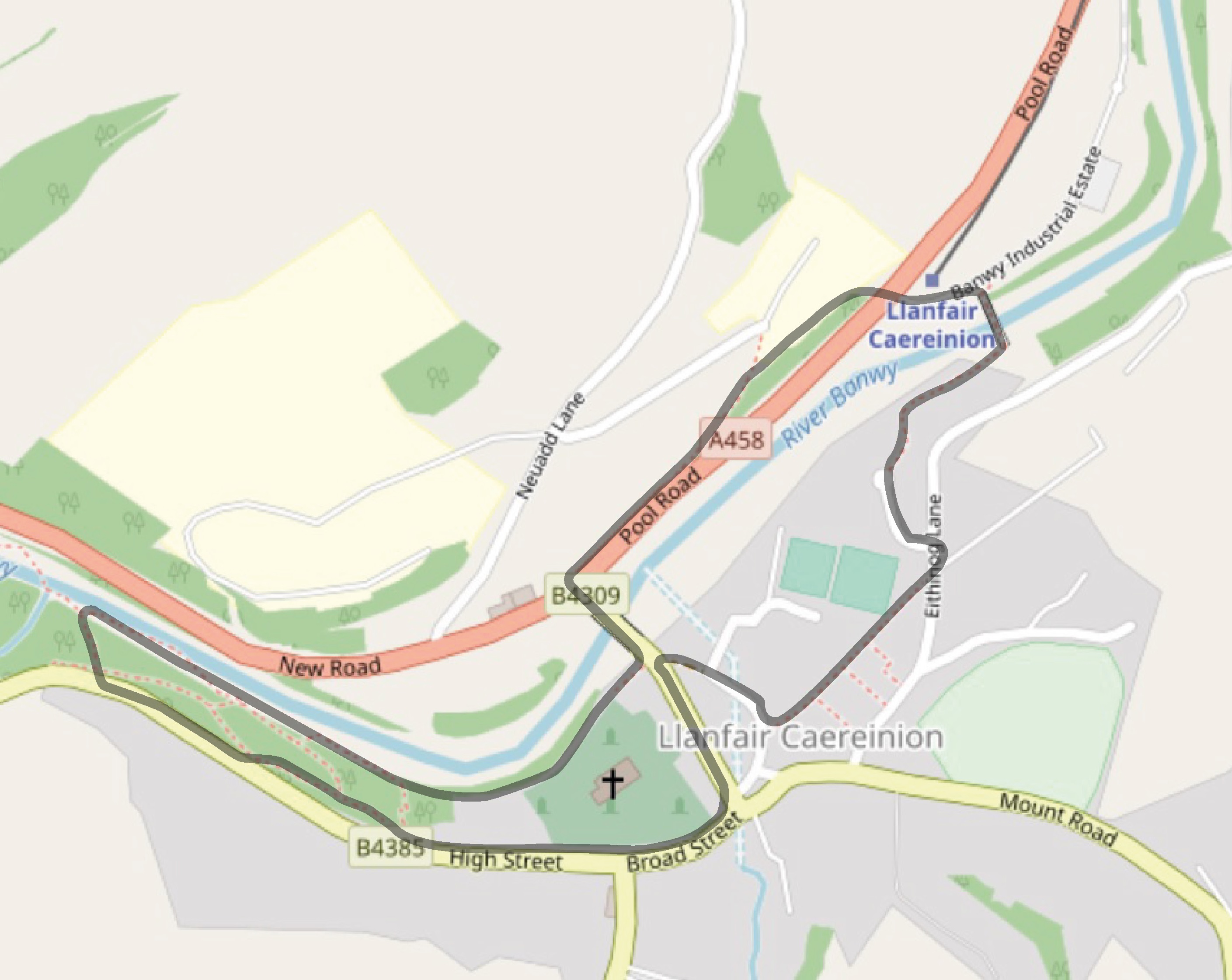 Private Victor M Jones, 6th (10th Battalion Royal Welch Fusiliers) Parachute Regiment. Private Jones survived a terrible explosion on HMS Abdiel, although he suffered severe injuries. Vic, as he was known, was christened Victor as he was born on Armistice Day of World War One. Vic worked for the local coal merchants and before the outbreak of war, while working in the coal yard just by the Railway Station, a farmer had taken two shire horses to this river for a drink. The horses bolted and dragged the farmer into the swollen river in what was known as the Whirlpool. Vic jumped into the swollen, fast flowing river to try and save the farmer, unfortunately for all his bravery he failed. The two horses survived.
Private Victor M Jones, 6th (10th Battalion Royal Welch Fusiliers) Parachute Regiment. Private Jones survived a terrible explosion on HMS Abdiel, although he suffered severe injuries. Vic, as he was known, was christened Victor as he was born on Armistice Day of World War One. Vic worked for the local coal merchants and before the outbreak of war, while working in the coal yard just by the Railway Station, a farmer had taken two shire horses to this river for a drink. The horses bolted and dragged the farmer into the swollen river in what was known as the Whirlpool. Vic jumped into the swollen, fast flowing river to try and save the farmer, unfortunately for all his bravery he failed. The two horses survived.
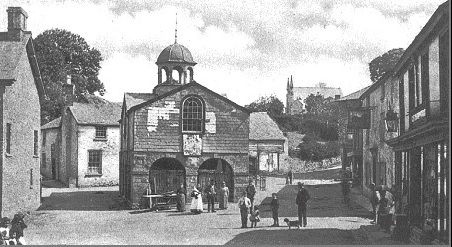 This photograph of Market Square in Llanfair Caereinion taken around 1885.
This photograph of Market Square in Llanfair Caereinion taken around 1885.
The old Market Hall in the middle of the picture provided a covered area for market stalls selling food and other local goods. The upper floor was a single large room which had been used for different purposes over the years, including use as a schoolroom. There was a small cell at one end of the ground floor. It had no windows or lighting, and it was used to hold offenders who had been arrested until they could be dealt with. The old Market Hall was knocked down a few years after this picture was taken, and a shop and hotel was opened on the same site in 1893.
The markets of the town date back to Queen Anne (1665- 1714) and were one of the most favoured features of the town, stock reared in the area was brought to the markets to be sold. The horse and pig market was held near the Black Lion. The cell of the Market Hall got much use on market days by men who were locked up overnight to sober up.
During the early part of the First World War 1914-1918 war, the George Family arrived in Liverpool as refugees from Belgium. The then Town Clerk of Liverpool, Mr Edward Pickmere arranged for them to live in a house in Bridge Street, still known today as Belgium House. During his early years in Llanfair, Alfred George started work as a vehicle mechanic apprenticed to Llewellyn Jehu who opened the first garage in Llanfair, now Bridge Garage, Londis. On his return to Belgium, Alfred George became the main Ford agent in Belgium. Another son, Fred Jones, who had always been keen on walking decided in 1921,at the age of 33, to walk from Llanfair to Belgium. In his diary, he obtained official stamps from the towns and villages through which he passed. He also describes the destruction left by war. In September 1967, the family George presented Llanfair with a plaque in gratitude of their stay in Llanfair. The plaque can be seen on the left hand wall of the institute as you enter the hall through the main doors.

Over 100 years ago the town had 16 public houses, each publican brewed their own beer supported by large malting houses. In all there were 3 malt houses located in Wesley Street, Mount Road and Poplars. Beer was also supplied to the towns of Dolgellau & Machynlleth.
The woollen industry was of considerable size, flannel and wool was made from sheep reared in the Parish. Many items of clothing were made locally and sold at markets in other areas.
 The hat industry was also prominent in the 1800’s, a young Quaker Richard Davies came to the area as an apprentice for a local felt maker. The felt was made with local wool which was beaten under a heavy hammer into a mass. The site of the hat industry was Hassals Yard. One of the reasons for the hat industry being located here was said to be quality of the well water in the yard.
The hat industry was also prominent in the 1800’s, a young Quaker Richard Davies came to the area as an apprentice for a local felt maker. The felt was made with local wool which was beaten under a heavy hammer into a mass. The site of the hat industry was Hassals Yard. One of the reasons for the hat industry being located here was said to be quality of the well water in the yard.
![]() Several mining enterprises have been recorded in the region over the centuries. One old Llanfarian believed that there was lead underneath the Churchyard, a great deal of money and labor was used to dig a tunnel from the bed of the river but no lead was found.
Several mining enterprises have been recorded in the region over the centuries. One old Llanfarian believed that there was lead underneath the Churchyard, a great deal of money and labor was used to dig a tunnel from the bed of the river but no lead was found.
Many other inhabitants thought there must be coal in the Parish, a company was formed and mining shafts sunk at the foot of Moel Bentyrch (a local hill 338m high) the shaft was about 28 meters deep, but the men soon got tired of digging. Some 80 years later in 1871, the shaft was reopened and one day news arrived in the town that miners had at last found coal. The Church bells rang loudly that afternoon and talk began of how the town would become the center of industry with the new find, however, the workers had been deceived, someone had thrown a barrow full of coal down the shaft during the night!
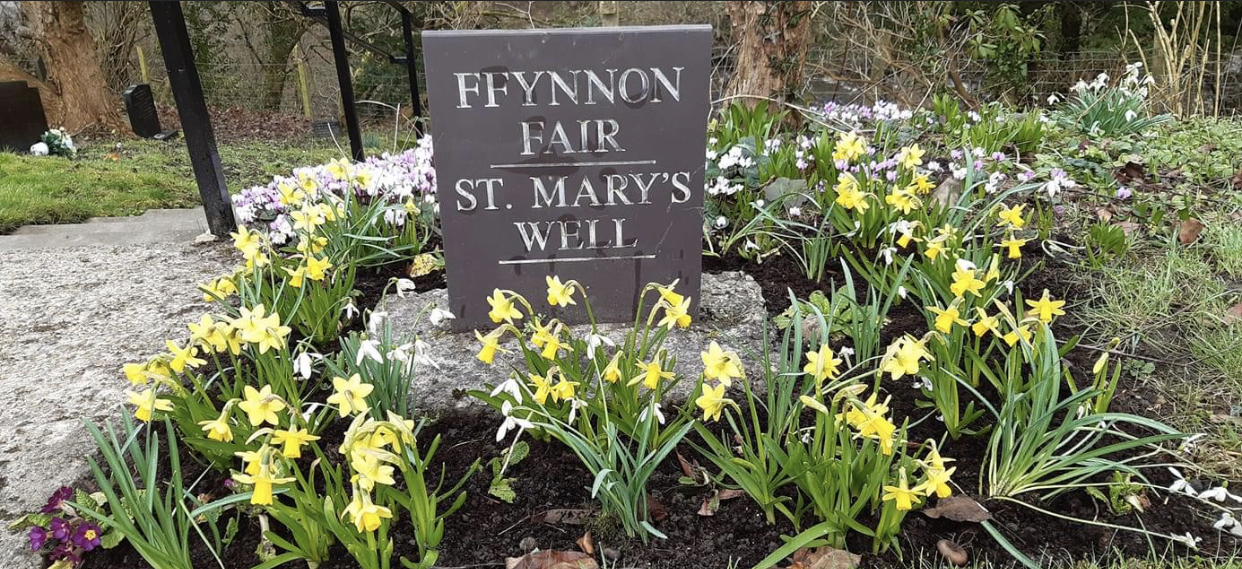 The well is thought to date back to the beginning of a Christian presence in the area and possibly to pagan times before that. Over the centuries it was a place of pilgrimage and the waters were believed to have healing properties, particularly rheumatism and skin diseases. It was also used for full emersion baptisms, until relatively recently. Church records show that it ran dry, for the first time in its history in the 1960s when a tunnel was constructed under part of the town as part of flood defences following flooding in the town which saw the main street look more like a river. The well fell into disrepair, but was then restored and is maintained by volunteers.
The well is thought to date back to the beginning of a Christian presence in the area and possibly to pagan times before that. Over the centuries it was a place of pilgrimage and the waters were believed to have healing properties, particularly rheumatism and skin diseases. It was also used for full emersion baptisms, until relatively recently. Church records show that it ran dry, for the first time in its history in the 1960s when a tunnel was constructed under part of the town as part of flood defences following flooding in the town which saw the main street look more like a river. The well fell into disrepair, but was then restored and is maintained by volunteers.
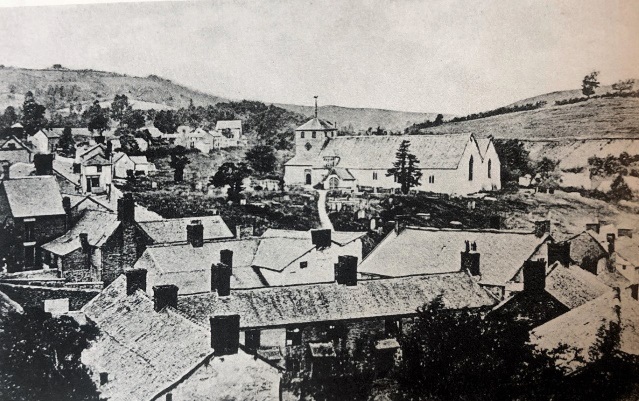 The name of this place is derived from the dedication of its church to St. Mary, and its distinguishing adjunct from an ancient encampment said to have been constructed, in the latter part of the fourth century, by Einion Yrth, tenth son of Cunedda Wledig, King of Cumbria.
The name of this place is derived from the dedication of its church to St. Mary, and its distinguishing adjunct from an ancient encampment said to have been constructed, in the latter part of the fourth century, by Einion Yrth, tenth son of Cunedda Wledig, King of Cumbria.
The earliest church on this river terrace site may have been founded in the early medieval period then it was said to have been established by the clas at Meifod. In 1239 it was recorded that a portion of the church was given to the nunnery at Llanllugan.
The medieval parish church had fallen into a dilapidated state by Victorian times and was demolished and completely rebuilt in 1868 using the original tower. This was in turn replaced in 1887. Some 15th century roof timbers were re-used in the new building along with a 13th century porch. A medieval effigy and font were reinstalled.
A large area of the town was burnt down by a devastating fire in September 1758. The fire is said to have started in the house of shoemaker Edward Jones. The wind was so high at the time of the fire that it spread violently through the top end of the street near The Goat Hotel to the lower part of the street.
At the time many houses were thatched and in all ten houses, seven shops and several barns and outhouses were burnt. The church steeple also caught fire, being cased in wood at the time, but fortunately most of the church was saved.
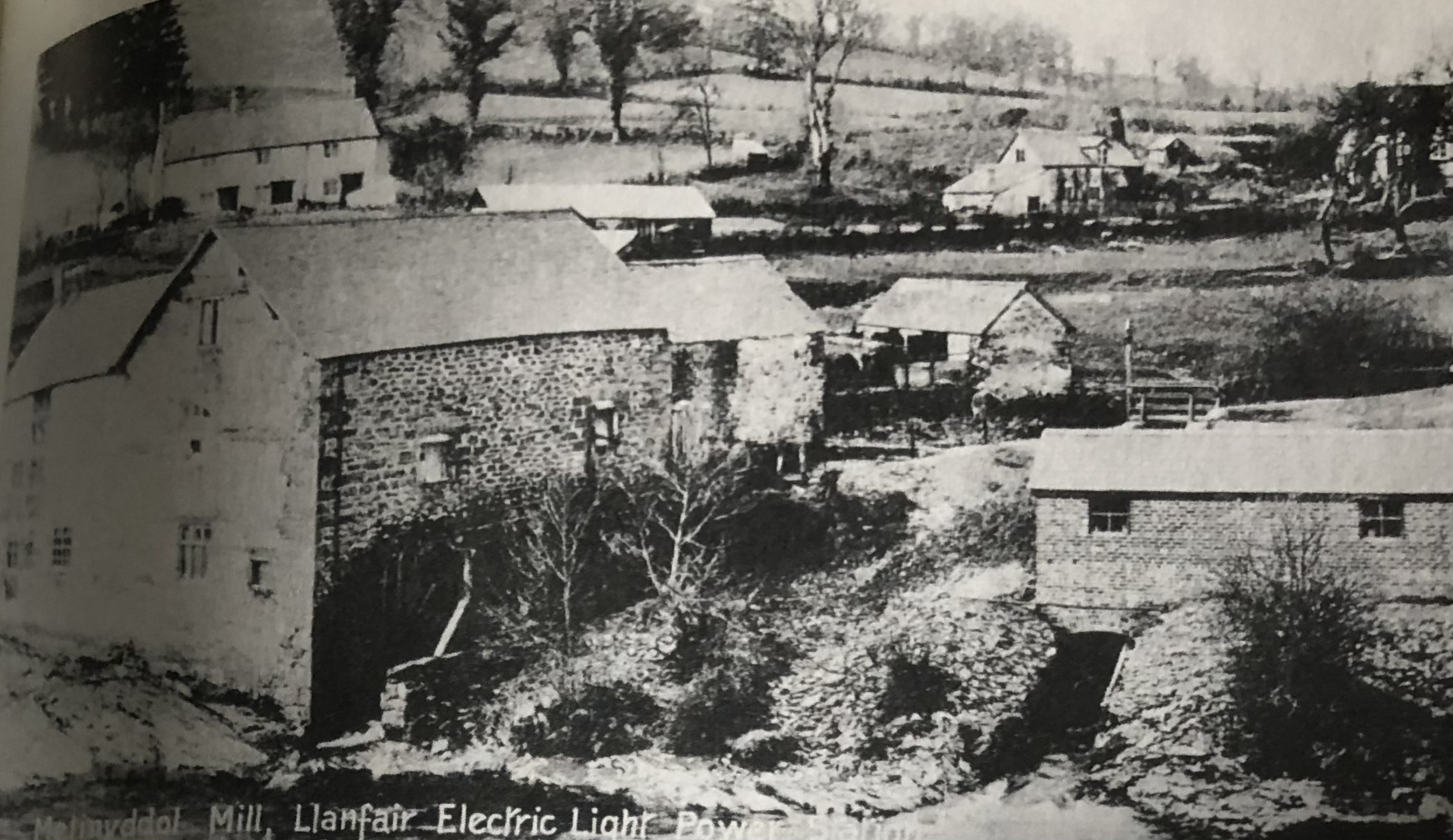 Before being connected to the National Grid in 1950’so, the town had its own power supplies, operated by a locally established co-operative Electric Light Society. In 1914 electricity was generated from a water turbine and generator. Llanfair is referred to as “Shining Llanfair” not only for the traditional white washed houses but also as one of the first places with Electric Street Lamps.
Before being connected to the National Grid in 1950’so, the town had its own power supplies, operated by a locally established co-operative Electric Light Society. In 1914 electricity was generated from a water turbine and generator. Llanfair is referred to as “Shining Llanfair” not only for the traditional white washed houses but also as one of the first places with Electric Street Lamps.
The Electric Society continued to serve the needs of the community until 28th Jan 1950, when an explosion occurred in the diesel generator. This was followed by a raging fire that brought disruption to the public electricity supply, at the time the society was supplying 170 consumers with power and 32 street lamps.
Continue past the Goat Hotel to reach Deri Woods & the Goat Fields Woodland Walk. There are several interpretive panels installed in the woods giving information on the whereabouts of the paths in the woods and connections to the Town, the history of the pump house, leaky dams, why felling young trees is helpful for the other trees in the wood and Deri woods starring role in the Mabinogion.
With thanks to the community & the National Lottery Heritage Fund for their contribution to this town walk trail.

